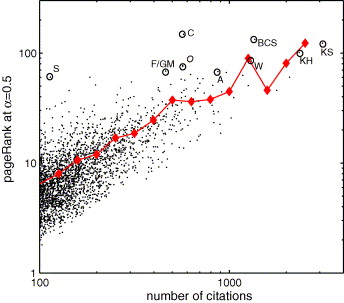
# Comprehending Google’s PageRank Algorithm: A Simplified Overview
Whenever you look something up online—such as questions like *”Why isn’t 11 read as onety-one?”* or *”Why is there no E grade?”*—the Google search engine activates, utilizing intricate algorithms to provide the most pertinent results. Central to this efficient operation is a significant algorithm known as **PageRank**, which assesses which results should be prioritized and their level of trustworthiness.
In this piece, we aim to simplify the PageRank algorithm, explaining terms like querying, indexing, relevance scores, and how Google evaluates the authority of web pages.
## What Does PageRank Mean?
**PageRank** is an algorithm developed by **Larry Page and Sergey Brin** in 1996 at Stanford University, prior to the establishment of Google. It served as the original cornerstone of Google’s search engine ranking framework. The fundamental goal of PageRank is straightforward: to evaluate the *significance, authority, and reliability* of a webpage based on the links leading to and from it. Essentially, it perceives the internet as a web of interconnected pages and assigns each page a numerical score, determining which pages are more pertinent to user inquiries.
Despite Google’s development involving many additional factors affecting page ranking today, the PageRank algorithm continues to be a vital component.
## How is PageRank Functioning?
Simply put, PageRank provides a score for each page within a web collection based on the quantity of links directed *to* and *from* other pages. The algorithm emphasizes these elements:
– The **quantity of links** from trustworthy pages.
– The **quality** of those links.
– The **relevance** of the content concerning the search query.
Google’s search engine performs this through two main processes:
1. **Querying:** Gathering and refining user queries.
2. **Indexing:** Analyzing website content and ranking it based on relevance and authority.
Let’s delve deeper into how these processes operate.
### Step 1: The Querying Mechanism
When a search request is made, Google’s Query Class undergoes several processing phases. Here are the essential steps:
1. **Parsing:** Extracts content from the input (for example, retrieving text from an HTML or XML file).
2. **Tokenizing:** Eliminates superfluous elements like punctuation and extra spaces.
3. **Stop Word Removal:** Removes common words such as “the,” “is,” or “and” that add little meaning to the search query.
4. **Stemming:** Transforms words into their base form. For instance, “running” turns into “run.”
This technique reduces the query to its fundamental components, enabling the search engine to pinpoint exactly what the user is requesting.
**For instance,** consider the following queries:
– “Dogs, Dogs, Dogs”
– “The running dog”
– “Adopt a dog”
– “Cute video of a dog running”
After parsing, tokenizing, stop word elimination, and stemming, these expressions transform into:
– “dog,” “dog,” “dog”
– “run,” “dog”
– “adopt,” “dog”
– “cute,” “video,” “dog,” “run”
### Step 2: Indexing and Assessing Pages
Once the query is processed, Google proceeds to evaluate which pages are most applicable to the query. To achieve this, it computes two crucial scores:
1. **Term Frequency (TF):** Indicates how many times a specific word (‘term’) occurs in the document.
2. **Inverse Document Frequency (IDF):** Assesses how rare or common a term is throughout the web. A common term like “the” would have a low IDF, while a more specific term like “run” might carry a higher IDF.
#### Example:
In the phrase “The Running Dog,” the algorithm would compute **Term Frequency (TF)** for the word “run” as:
“`
TF = (Number of times ‘run’ occurs) / (Number of times most frequently occurring word occurs)
TF = 1 / 4 = 0.25
“`
Subsequently, it calculates **Inverse Document Frequency (IDF)** utilizing the following formula:
“`
IDF = log(total number of documents / number of documents containing ‘run’)
“`
For this word, IDF = log(4/2) = log(2) = 0.30.
Next, the **Relevance score** for the word is determined using:
“`
Relevance = TF * IDF = 0.25 * 0.301 = 0.075
“`
### Step 3: Evaluating Page Authority (PageRank Score)
Following this, the algorithm evaluates how the pages are interconnected via **PageRank**. This methodology is reliant on links transmitting “authority” or